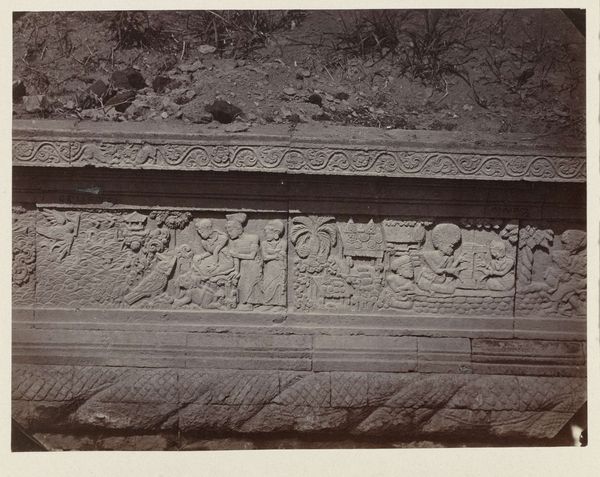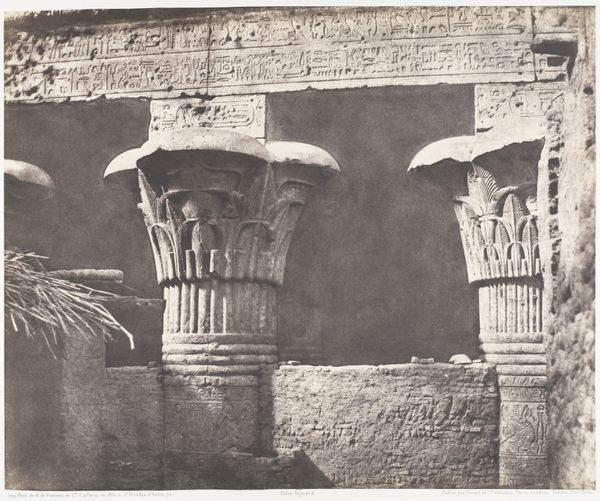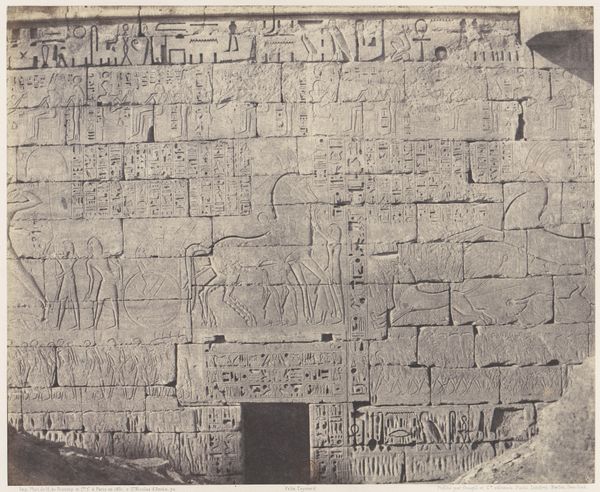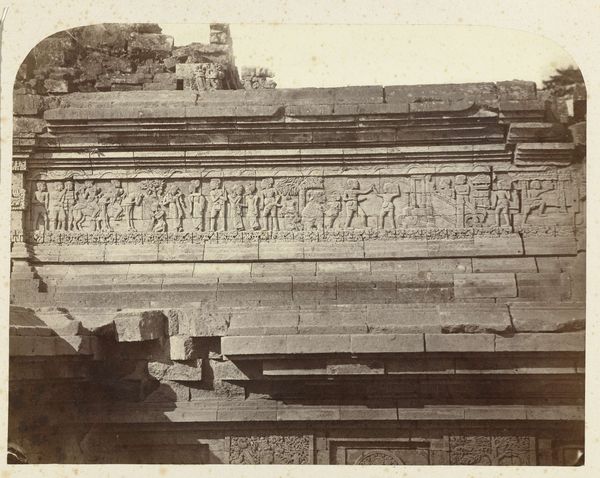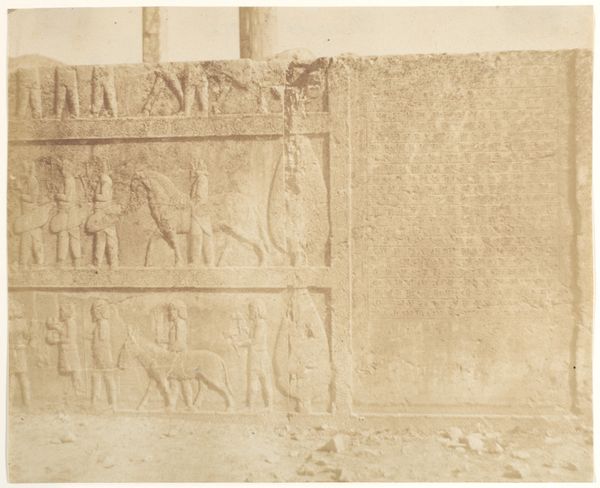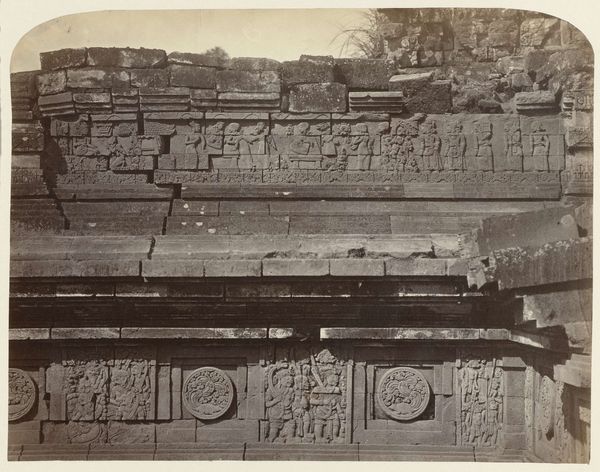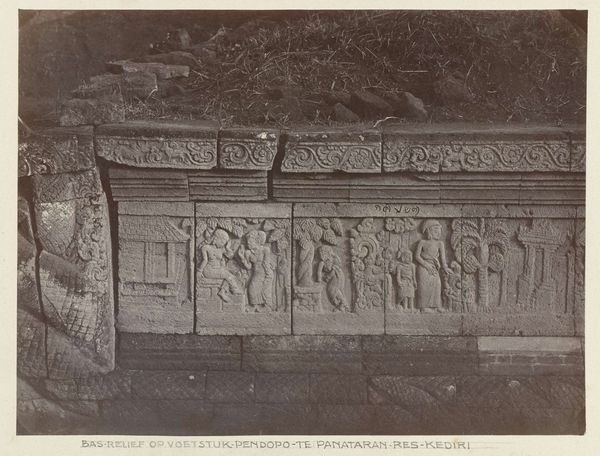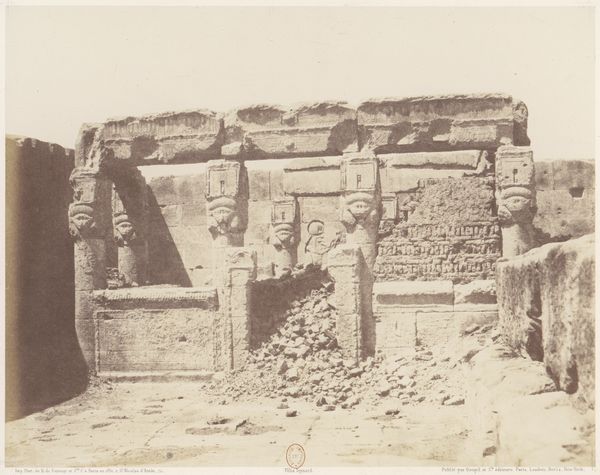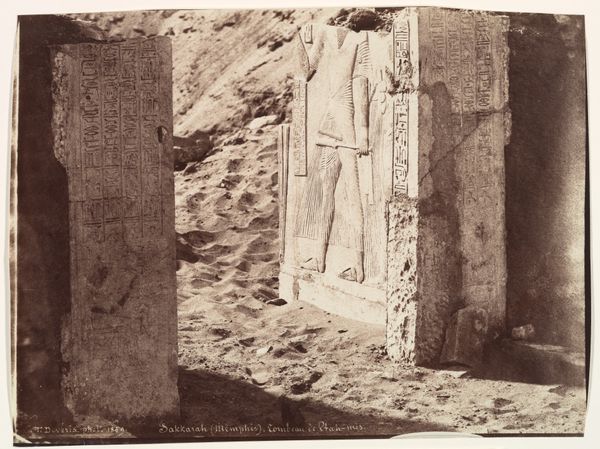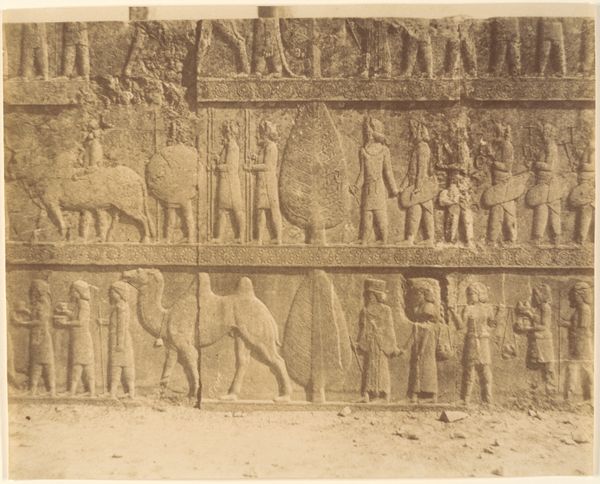
Dendérah (Tentyris), Mammisi - Décoration Extérieure de la Face Sud 1851 - 1852
0:00
0:00
print, photography, architecture
# print
#
landscape
#
ancient-egyptian-art
#
outdoor photograph
#
photography
#
arch
#
architecture
Dimensions: 24.0 x 30.0 cm. (9 7/16 x 11 13/16 in.)
Copyright: Public Domain
Curator: The first thing that strikes me about this photograph is the palpable sense of antiquity; it's steeped in the weight of history, literally emerging from the earth. Editor: Indeed. We are looking at Félix Teynard’s "Dendérah (Tentyris), Mammisi - Décoration Extérieure de la Face Sud," captured between 1851 and 1852. It documents the exterior decoration of the Mammisi at Dendera, and in thinking about what makes this photo compelling, the issue of the printing and production seems crucial. The scale and the commitment it took to capture these architectural marvels in a single photograph are monumental. Curator: Absolutely, and I think the very act of documenting it speaks volumes about 19th-century Orientalism. This photograph served to consolidate an image of Egypt as this timeless, almost mythical place for Western audiences. The architecture is static; the people are notably absent, allowing a Western audience to fill that void with their imagined narratives. Editor: True, and one thing I'm drawn to is how Teynard's work makes you aware of the materiality of the structure. You can practically feel the texture of the stone and the immense effort involved in creating those carvings. It pushes us to think about labor: the hands that built and carved this, and the social systems within which this labor operated. It feels so massive, ancient and imposing. Curator: Agreed. Consider, too, how these carvings acted as a potent display of power. Hieroglyphs aren’t merely decoration; they represent a complex narrative of gods, pharaohs, and societal structure that reinforced existing hierarchies. And what did it mean when someone decided to remove the Egyptian laborers to reveal just the work? We lose any context for understanding of resistance or even their own self perception within these images. Editor: Precisely! Focusing on these production methods— the carving, the photographic process, the distribution of images — opens a fascinating discourse regarding labor. Curator: Ultimately, Teynard's image encapsulates how Egypt and other parts of the non-western world were, and in some ways continue to be, perceived through a Western lens. It underscores the complexities and questions that emerge when power intersects with visual representation. Editor: Exactly. Looking closer makes you aware of the materials, how they work and connect socially and historically to larger contexts, as it pushes us to reckon with the past while providing valuable material to critique these dynamics.
Comments
No comments
Be the first to comment and join the conversation on the ultimate creative platform.
